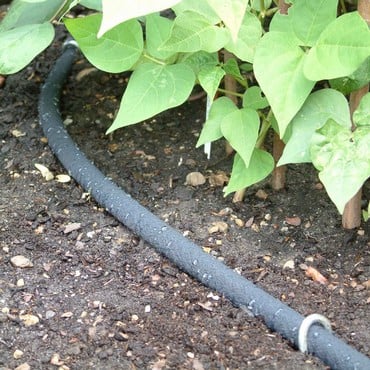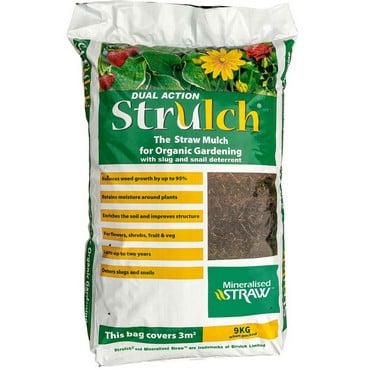Summer so far has been a hot one to say the least. That being said, here's a few tips and tricks to water your garden effectively in the heat...
Following a few simple guidelines can really make a difference, making your watering more effective and less wasteful:
• Concentrate on the crops that will benefit the most rather than watering the whole plot or bed randomly.
• Loosen any trodden soil first to aid water penetration.
• Where practical try to use a watering can, it’s the most precise means for delivering the right amount of water directly to the plant roots. A fine rose end for seedbeds and seedlings prevents them washing away. For individual plants, a stream from the sprout to their base will do the trick.
• Always water the soil rather than the leaves. This ensures that water goes straight to the roots where it is most needed.
• Thoroughly soaking the soil (about an inch) encourages plants to develop deep root systems that are capable of drawing on water further down in the soil. There should be enough moisture to penetrate the top 5 or 6 inches of the soil.
THINGS TO AVOID?
• The heat of the day (10am to 6pm)! The sun and wind quickly evaporate your best efforts.
• Frequent light watering. This just wets the soil surface with most of it evaporating. It also encourages shallow rooting and makes plants vulnerable to lack of water.
• Saturation leads to water wastage as some will evaporate or run off.
• Scatter gun approach with a sprayer nozzle.
• Making foliage frequently wet overnight because it builds up fungal diseases.
LACKING TIME?
It’s automatic watering for you. Rather than rely on friends and family to get it right, think about automatic watering. A water timer is a real gem in this instance. Attach it to a tap and hose, and then pre-set it to come on once or twice a day. Water spikes that hold plastic bottles are another good idea. These pitch into the soil and drip feed water at a slow rate over a 1–3-week period – perfect for container growing.
EXTRA TIPS FOR WATERING BEDS
• Create ridges either side of a row or rings of earth 30cm away from the stem of widely spaced crops. This holds water in the right place as it slowly seeps into the soil.
• Plants are best watered at their roots as so much is wasted by evaporation when sprinklers and hoses are used.
• Pitch a water spike into the soil next to very thirsty plants. By attaching a water bottle to the spike, it will drip feed water straight to the roots.
• Lay a soaker hose along rows. The holes along its length trickles water slowly into the soil which stops it from running off or compacting the soil.
• Add a layer of straw mulch around plants to conserve soil moisture. A 2- to 4-inch-thick layer in early spring, before the hot weather arrives is all you need. You’ll be glad when you do because not only will you water less often, but the straw mulch moderates soil temperature and will keep weeds down too.
• Dig compost, leaf mould (rotted leaves) or well-rotted manure into the soil to help it hold onto moisture for longer.
EXTRA TIPS FOR CONTAINER WATERING
• Before planting up, try adding water retaining gel to the compost. It absorbs water and releases it slowly over time.
• Add at least a 2cm deep layer of straw mulch which will help to retain moisture in the container and prevent weeds.
• Pitch a water spike into the soil next to very thirsty plants. By attaching a water bottle to the spike, it will drip feed water straight to the roots.
EXTRA TIPS FOR GROWBAG GROWING
• Water and any liquid feed can be economically delivered at plant root level by attaching a reservoir tube across the length of the growbag. Just attach a full 2 litre bottle and leave it to drip feed to the plants with no fear of over or under watering.
• Why not try watering into grow rings? It’s another easy way to ensure accurate watering and the adding of liquid plant feed. You can fit 3 into a bag around each plant by rotating the serrated edges and by filling the rings water will slowly seep down directly to the roots.
EXTRA TIPS FOR INDOOR WATERING
• Delicate seedlings require delicate watering so make sure you use a fine spray headed watering can. For a really cheap fix attach mini bottle top sprinklers to empty plastic bottles and gently squirt instead.
• Keeping a full watering can overnight next to the pots will mean the water temperature is the same as the compost when it comes to morning watering. This reduces any shock to the plant roots.
• A quick way of watering lots of pots is to stand them in a reservoir tray that is lined with capillary matting. Just keep the reservoir tray topped up, let the felt-like matting suck up the water and the roots will take what they need, when they need it.





























